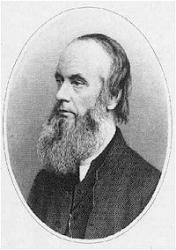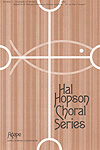- |
User Links
Come, Ye Thankful People, Come

Come, ye thankful people, come
Author: Henry Alford (1844)Tune: ST. GEORGE'S WINDSOR (Elvey)
Scripture Songs
Published in 727 hymnals
Printable scores: PDFPlayable presentation: Lyrics only, lyrics + musicAudio files: MIDI, Recording
Representative Text
1 Come, ye thankful people, come,
raise the song of harvest home;
all is safely gathered in,
ere the winter storms begin.
God our Maker doth provide
for our wants to be supplied;
come to God's own temple, come,
raise the song of harvest home.
2 All the world is God's own field,
fruit as praise to God we yield;
wheat and tares together sown
are to joy or sorrow grown;
first the blade and then the ear,
then the full corn shall appear;
Lord of harvest, grant that we
wholesome grain and pure may be.
3 For the Lord our God shall come,
and shall take the harvest home;
from the field shall in that day
all offenses purge away,
giving angels charge at last
in the fire the tares to cast;
but the fruitful ears to store
in the garner evermore.
4 Even so, Lord, quickly come,
bring thy final harvest home;
gather thou thy people in,
free from sorrow, free from sin,
there, forever purified,
in thy presence to abide;
come, with all thine angels, come,
raise the glorious harvest home.
United Methodist Hymnal, 1989
Author: Henry Alford
 Alford, Henry, D.D., son of the Rev. Henry Alford, Rector of Aston Sandford, b. at 25 Alfred Place, Bedford Row, London, Oct. 7, 1810, and educated at Trinity College, Cambridge, graduating in honours, in 1832. In 1833 he was ordained to the Curacy of Ampton. Subsequently he held the Vicarage of Wymeswold, 1835-1853,--the Incumbency of Quebec Chapel, London, 1853-1857; and the Deanery of Canterbury, 1857 to his death, which took. place at Canterbury, Jan. 12, 1871. In addition he held several important appointments, including that of a Fellow of Trinity, and the Hulsean Lectureship, 1841-2. His literary labours extended to every department of literature, but his noblest undertaking was his edition of the Greek Testament, the result… Go to person page >
Alford, Henry, D.D., son of the Rev. Henry Alford, Rector of Aston Sandford, b. at 25 Alfred Place, Bedford Row, London, Oct. 7, 1810, and educated at Trinity College, Cambridge, graduating in honours, in 1832. In 1833 he was ordained to the Curacy of Ampton. Subsequently he held the Vicarage of Wymeswold, 1835-1853,--the Incumbency of Quebec Chapel, London, 1853-1857; and the Deanery of Canterbury, 1857 to his death, which took. place at Canterbury, Jan. 12, 1871. In addition he held several important appointments, including that of a Fellow of Trinity, and the Hulsean Lectureship, 1841-2. His literary labours extended to every department of literature, but his noblest undertaking was his edition of the Greek Testament, the result… Go to person page >Text Information
Related Texts
| First Line: | Come, ye thankful people, come |
| Title: | Come, Ye Thankful People, Come |
| Author: | Henry Alford (1844) |
| Meter: | 7.7.7.7 D |
| Place of Origin: | England |
| Language: | English |
| Copyright: | Public Domain |
| Liturgical Use: | Scripture Songs |
- (hymns)
- (hymns)
- (hymns)
- (hymns)
- (hymns)
- (hymns)
- (hymns)
- (hymns)
- (hymns)
- (hymns)
- (hymns)
- (hymns)
- (hymns)
- (hymns)
- (hymns)
- (hymns)
- (hymns)
- (hymns)
- (hymns)
- (hymns)
- (hymns)
- (hymns)
- (hymns)
- (hymns)
- (hymns)
- (hymns)
- (hymns)
- (hymns)
- (hymns)
- (hymns)
- (hymns)
- (hymns)
- (hymns)
- (hymns)
- (hymns)
- (hymns)
- (hymns)
- (hymns)
- (hymns)
- (hymns)
- (hymns)
- (hymns)
- (hymns)
- (hymns)
- (hymns)
- (hymns)
- (hymns)
- (hymns)
- (hymns)
- (hymns)
- (hymns)
Chinese
English
- A Book of Song and Service: for Sunday school and home #204
- A Child's Book of Hymns #d2
- A Church Hymn Book: for the use of congregations of the United Church of England and Ireland #228
- A Church of England Hymn Book: adapted to the daily services of the Church throughout the year #570
- A Hymnal and Service Book for Sunday Schools, Day Schools, Guilds, Brotherhoods, etc. #277
- A Hymnal for Friends #150
- A Junior's Praise #86
- A Manual of Worship: for the chapel of Girard College #31
- A New Hymnal for Colleges and Schools #70
- A School Service Book #d24 10 shown out of 528
Spanish
Welsh
Notes
Scripture References:
st. 2 = Mark 4:28
st. 3 = Matt. 13:41-43
st. 4 = Rev. 22:20
Henry Alford (b. London, England, 1810; d. Canterbury, England, 1871) wrote this text and published it in seven stanzas in his Psalms and Hymns (1844). He revised and shortened it for publication in his Poetical Works (1865) and made final changes for his Year of Praise (1867). The latter version is the source of the further revised Psalter Hymnal text.
Written for village harvest festivals in England, the text uses imagery found in two gospel parables: the growing seed (Mark 4:26-29) and the wheat and the weeds (Matt. 13:24-30, 36-43). However, the initial agricultural harvest theme becomes an eschatological metaphor for the final judgment when the angels will gather God's chosen people into the "glorious harvest home" and cast the evil "weeds" into the "fire." Thus the text provocatively combines language and imagery that represent annual harvests as well as the ultimate consummation of history.
Alford was born into a family of clergy. He received his education at Trinity College, Cambridge, England, and was ordained in the Church of England in 1833. He became dean of Canterbury Cathedral in 1857, a position he held until his death. A renowned scholar, Alford wrote a four-volume commentary on the Greek New Testament, which became a standard work in its field. He was also a voluminous poet and hymn writer and published Poetical Works (2 vols, 1845) and Hymns for the Sundays and Festivals Throughout the Year (1836).
Liturgical Use:
Best suited for services that focus on the task or mission of the church in the world; associated in popular thought with harvest thanksgiving services, its use on such occasions merits some comment about the meaning of the harvest metaphor. Also use or Pentecost season; worship that focuses on Christ's second coming.
--Psalter Hymnal Handbook, 1987
=================
Come, ye thankful people, come. H. Alford. [Harvest.] First published in his Psalms and Hymns, 1844, No. 116, and subsequently, after revision, in his Poetical Works, 1865, and his Year of Praise, 1867, in 7 stanzas of 8 lines. In 1861 the compilers of Hymns Ancient & Modern included an altered version in that Collection. This was repudiated by tho author, but still retained by the compilers of Hymns Ancient & Modern, with an explanatory note in the Preface in some of the subsequent editions. The revised text in Alford's Poetical Works, 1865, is the authorized text, and that usually given in modern hymnals. This hymn has attained a greater popularity and more extensive use, both in Great Britain and America, than any other of the author's hymns.
--John Julian, Dictionary of Hymnology (1907)
Tune
ST. GEORGE'S WINDSOR (Elvey)George J. Elvey (PHH 48) composed ST. GEORGE'S WINDSOR as a setting for James Montgomery's text "Hark! The Song of Jubilee," with which it was published in Edward H. Thorne's Selection of Psalm and Hymn Tunes (1858). The tune has been associated with Alford's text since publication of the hymn in th…
For Leaders
Text:
In 1844, Henry Alford published this hymn in his Psalms and Hymns, under the title “After Harvest.” He was rector of a rural parish in England at that time, and the text was written for a harvest festival. Although it was originally written with seven stanzas, Alford revised and shortened it to include only four in his Poetical Works in 1865. He wrote in a footnote there that he did not approve of the various other revisions that had been made without his consent. Nevertheless, the standard text now in use is significantly different from Alford's in the fourth stanza.
“Come, Ye Thankful People, Come” combines the image of an autumn harvest (st. 1) with two of Jesus parables, from Mark 4:26-29 (st. 2, second half) and Matthew 13:24-30, 36-43 (st. 2-4). It is commonly sung as a song of rejoicing over a bountiful harvest, which it appears to be from the first stanza. However, it is really a more sobering text and may have been intended to provoke Christians to consider whether they are truly people of God (represented by the wheat in Jesus' parable of Matthew 13), or merely lookalikes (represented by the weeds – also called “tares” in some translations). The second stanza closes with a brief prayer that God would enable those who sing to be true Christian disciples, while the fourth stanza is a prayer that the Lord would soon return for the final harvest.
Tune:
George J. Elvey was the organist of St. George's Chapel at Windsor Castle for 47 years. He wrote this tune for a text by James Montgomery, and the tune was published in E. H. Thorne's Selection of Psalm and Hymn Tunes in 1858. It was named ST. GEORGE'S WINDSOR after the chapel, and was first matched with Alford's text in the 1861 Hymns Ancient and Modern. This tune works well when sung in harmony. The opening rhythmic motif is repeated throughout the tune, making it easy for congregations to sing.
When/Why/How:
This hymn is traditionally sung for Thanksgiving, and is also appropriate for a service with a sermon on Matthew 13. For a Thanksgiving service focusing on the joy of a good harvest, a short choral introit using only the first stanza of “Come, Ye Thankful People, Come,” accompanied by organ, piano, and optional handbells, is appropriate. Also for that occasion, “Come, Ye Thankful People, Come” and “Now Thank We All Our God” are commonly used together, as in “Come and Give Thanks,” a rhythmically interesting medley for a brass quintet and piano.
Tiffany Shomsky, Hymnary.org
Timeline
Arrangements
Media
Psalter Hymnal (Gray) #527
The United Methodist Hymnal #694
- MIDI file from Baptist Hymnal 1991 #637
- Audio recording from Baptist Hymnal 1991 #637
- MIDI file from Baptist Hymnal 1991 #637
- Audio recording from Baptist Hymnal 2008 #636
- MIDI file from The Cyber Hymnal #1025
- Audio recording from Evangelical Lutheran Worship #693
- Audio recording from Glory to God: the Presbyterian Hymnal #367
- Audio recording from Lift Up Your Hearts: psalms, hymns, and spiritual songs #473
- Audio recording from Lift Up Your Hearts: psalms, hymns, and spiritual songs #473
- MIDI file from Psalter Hymnal (Gray) #527
- MIDI file from Psalter Hymnal (Gray) #527
- Audio recording from Trinity Hymnal (Rev. ed.) #715
- Audio recording from The Worshiping Church #381
- MIDI file from The United Methodist Hymnal #694
- Audio recording from The United Methodist Hymnal #694
- MIDI file from United Praise: for use in Sunday Schools, Young People's Societies and other Church Services #162
- MIDI file from Worship and Rejoice #721
- MIDI file from With Heart and Voice: songs for all God's children #136
- MIDI file from With Heart and Voice: songs for all God's children #136
- MIDI file from Worship in Song: A Friends Hymnal #42


 My Starred Hymns
My Starred Hymns







